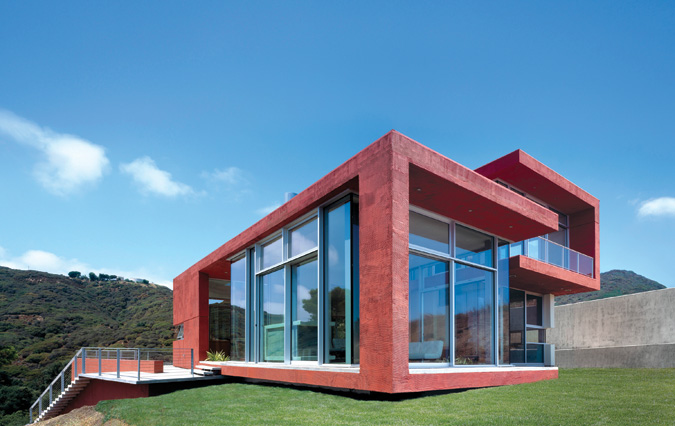
The Los Angeles architectural community has been deprived of one of its kindest and strongest advocates. Stephen Kanner was sadly taken from us on July 2, at the very young age of 54. I had tremendous affection for Stephen, and considered him almost as another son. I was a colleague of his father, Chuck Kanner, who was another wonderful person and very fond of his mother, Judith, an interior designer and writer.
KanneR.
Courtesy Kanner Architects
|
When Stephen graduated from Berkeley, he came to visit me at my office to show me his work from school. I was extremely impressed with his design ability, his personality, and self-confidence, and I knew that someday this young man would become a successful architect. He proved me correct in a very short time.
The Kanner Architects firm was founded by Stephen’s grandfather, Herman, in 1946. After he passed away, it continued under the leadership of Chuck Kanner. When Steve joined his father as partner, the firm grew exponentially. His work started popping up on Montana Avenue in Santa Monica and in Westwood Village, and began receiving design awards.
By the time he was 43, he was named a Fellow of the National AIA. This was followed by his being chosen to become president of the Los Angeles Chapter of the AIA. As president, one of his goals was to bring more young architects into the chapter and to encourage architectural students to join the student chapter. He knew that the future of the architectural profession and the AIA depended upon its youth, and he was a wonderful role model.
Together with Bernard Zimmerman, “the great inspiring idea person,” as mentor, Steve acted as facilitator, hosting meetings at his office of a group of other young architects to plan a series of exhibits that were held at the PDC during West Week. Beginning in 1994 with 100/100, followed by New Blood/101 and Millennium, these exhibits showcased the talented work of young Los Angeles architects. In 2001 the dynamic duo of Steve and his friend and colleague Joe Addo spearheaded the opening of the A+D Museum.
It was Steve’s tenacity that kept the A+D going as it moved from location to location—from the Bradbury Building to Santa Monica, to the Sunset Strip, to the first Wilshire Boulevard location, and now to its present permanent home on Wilshire, across from LACMA. He had the ability to find kind, generous, people who donated space, and whose time, expertise, and energy made it all possible. He was also somehow able to convince people of the importance of the A+D. This was accomplished because he provided the example of giving his own time and energy so generously and with such enthusiasm and grace.
I remember in 2003, when Steve and the A+D invited me to create a retrospective exhibit of my work from 1953 to 2003. He not only encouraged me, but he put together a team willing to generously donate their services to make it happen. At the time, when I felt that with such an ambitious project we might not meet the deadline for the announced opening, Steve and I experienced a role reversal. He became the mentor, confidently saying, “We will make it, we will definitely make it.”
Through the perseverance of Steve and his excellent team, we had an opening, on schedule, attended by some 300 people. He was a strong, positive thinker, and that, along with all his other wonderful traits, is what made Stephen Kanner so special. It is my hope that all the love and attention that Stephen poured into the A+D will ensure its continuing and becoming his greatest legacy.
Along with all these efforts, Steve also made time for other community involvement, including serving on numerous design review boards. He seemed to have endless energy, and he performed so effortlessly with his calm, confident, and pleasant demeanor. His practice continued to grow as well. He had a staff as large as 50 employees at times, and he maintained an excellent design level, continuing to win awards, publication in many magazines, several books, and two monographs.
Stephen had laid the groundwork in such a short number of years for all he did. With his great enthusiasm, intelligence, and love of architecture, we can only imagine what he might have accomplished in the next 30 years.